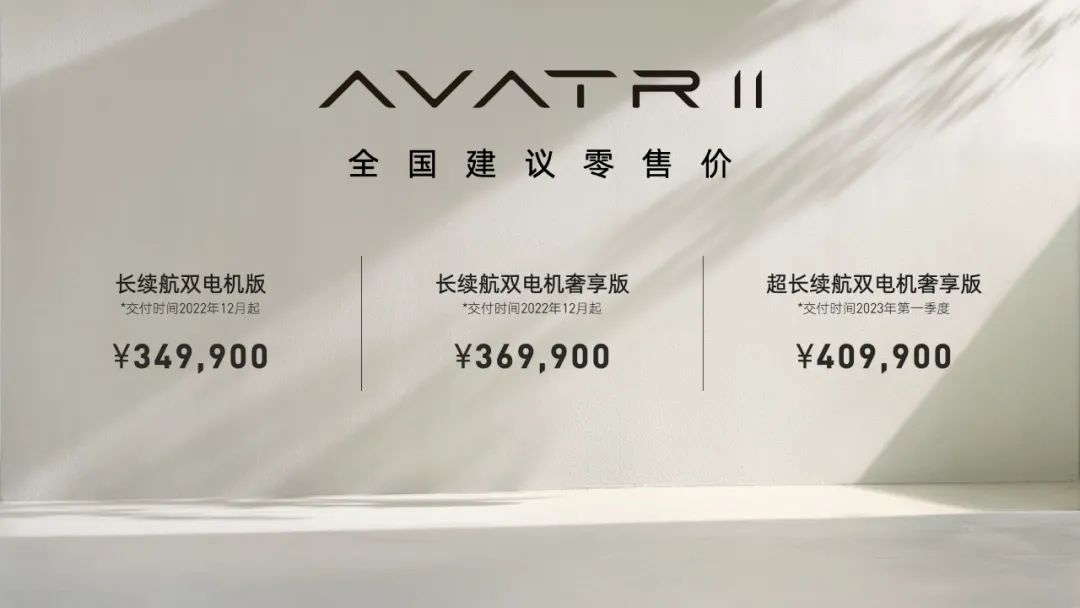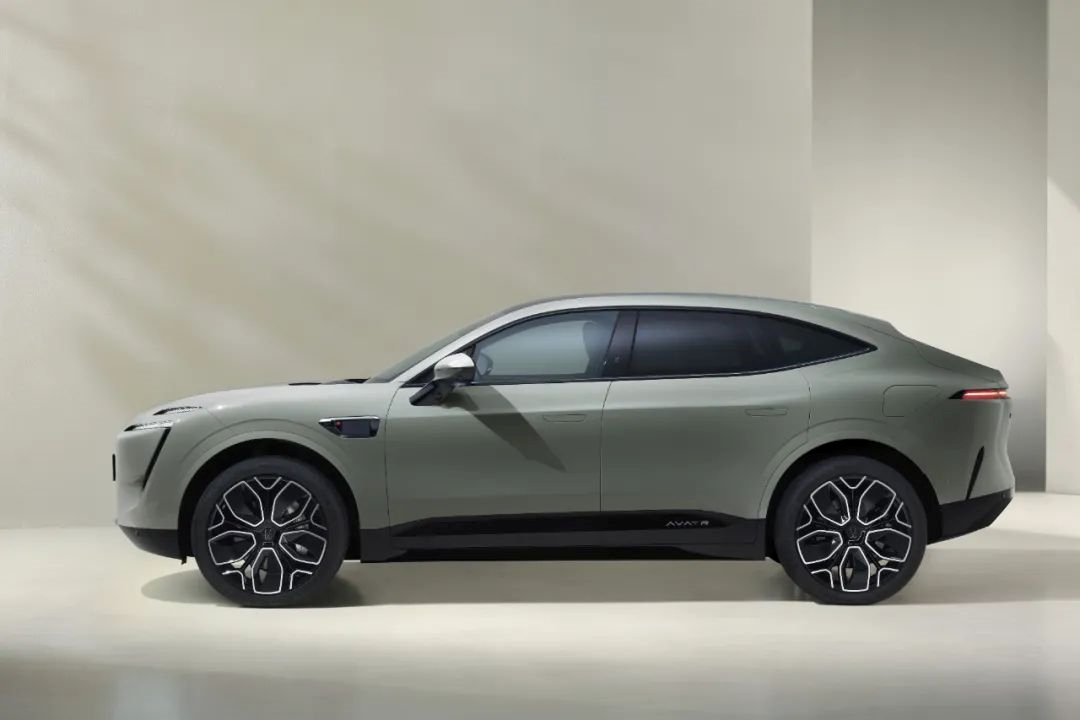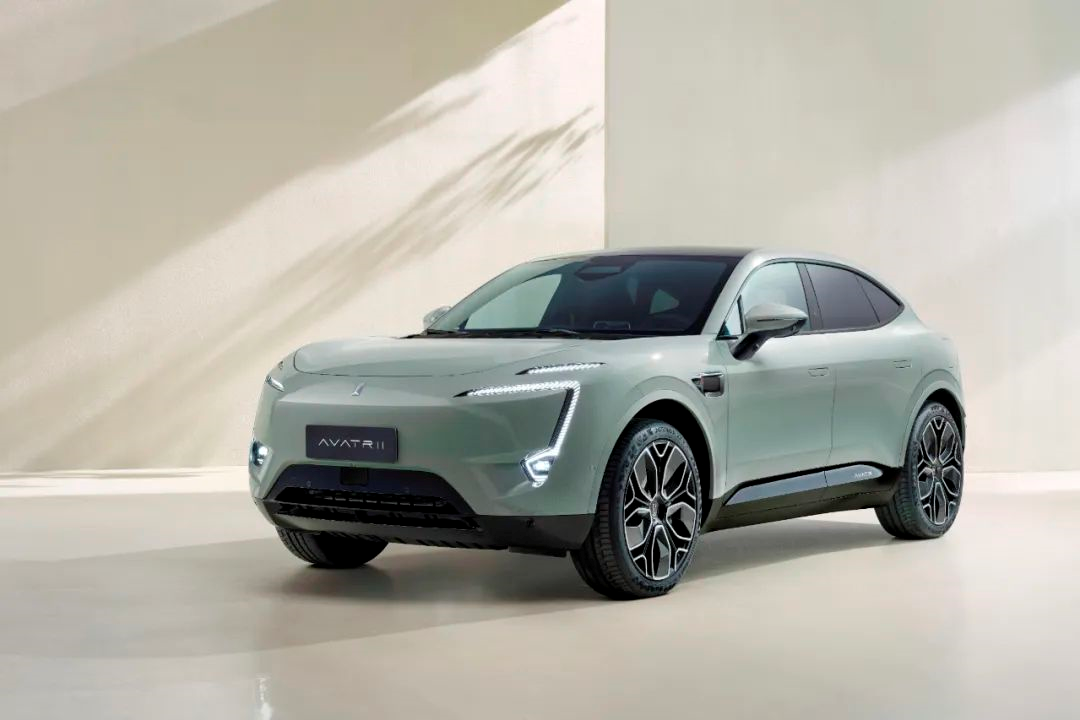Author: CH_ChenHan
Being unconventional should not be a penalty.
Last night, the first new car jointly produced by Changan, Huawei, and CATL –– the AVITA 11 officially went on sale at a price range of CNY 3.499-4.099 million.
Also available for sale is the limited edition AVITA 011, co-designed with the designer of Givenchy, priced at CNY 600,000.

After the prices were announced, the car drew a lot of controversy online regarding its design, positioning, price, and whether it’s worth the purchase.
In this article, we will quickly analyze the “danger” and “opportunities” facing the AVITA 11.
Strong alliance, there’s no reason why they can’t make good cars.
Firstly, for those interested in the AVITA 11, be rest assured that the product will definitely not disappoint at the product level.
After all, with the strong alliance of Changan + Huawei + CATL, if the “national team of car producers” cannot make good cars, then China’s automobile industry would be in big trouble.
Even though the AVITA 11’s exterior design drew the most controversy, after seeing the real car of the limited edition version, AVITA 011, I have to admit that “it is a unique and attractive car.”

As the first product of a brand new brand, the worst outcome would be to be forgotten, so it is very important to be remembered.
Obviously, whether it is displayed in the exhibition hall or driven on the road, the AVITA 11 is an attention-grabbing existence that cannot be ignored.
Being unconventional in design is definitely not something that everyone can accept, but in this era of pursuing individuality, bold original design should not be a penalty.
Static experience of AVITA 011:
Of course, the AVITA 11 is not just limited to eye-catching design, as it also boasts impressive features beneath the surface.The Avita 11 has the size of a mid-size SUV, matched with the double wishbone + multi-link suspension structure typical of mid-size luxury cars. It also comes with the Huawei DriveONE dual-motor four-wheel drive system as standard across the range, and is equipped with a Ningde Times CTP battery with a 90-degree or 116-degree angle. Its acceleration from 0 to 100 km/h is 3.98 seconds, and it has a CLTC range of 555 kilometers.
Not only that, the Avita 11’s standard configuration also includes the Huawei HarmonyOS cockpit and the Huawei Intelligent Driving System, which includes three laser radars, making it the current production car leader in terms of intelligence.
Whether it is the mechanical structure and performance parameters valued by traditional cars or the battery life and intelligence valued by new energy vehicles, the Avita 11 is a force to be reckoned with.
In addition, the standard configuration of the Avita 11 is also very high. Compared to similarly priced Tesla Model Y or NIO ES6, it offers outstanding value for money.
Among them, the 369,900 Yuan long-range dual-motor luxury edition, aside from the optional 4 seats and fragrances, and the subscription-based city driving assistance, has almost all highlight features including the NAPPA leather interior, electric frameless doors, front seat ventilation/heating/massage, high-speed driving assistance, remote parking, and more.
This version is the one I think is the most worth buying.
“Smart and Understanding Incarnation”?
However, having excellent product performance and value for money doesn’t necessarily guarantee success.
Longan’s car-building prowess is undoubtedly evident among domestic brands. Years ago, when Great Wall began to make WEY cars and Geely began to make Lynk & Co, I believed that Changan had the ability and should also create a high-end brand.
However, for various reasons, it wasn’t until the birth of Avita that Changan finally took that step.
Although this was the result of “planning before action,” in the era of electrification, Chinese brands have a higher price ceiling, and by joining forces with Huawei and Ningde, Avita has gained an even stronger advantage in intelligence and battery technology than Changan could have on its own.
Nonetheless, opportunities and challenges always coexist. Choosing to launch during a more cautious period means that Avita has missed out on development opportunities during the blue ocean period and has lost a lot of time for trial and error.
Since the launch of the new car last night, there has been a mixed response to the pricing of the Avita 11 online.Based on the judgment of product competitiveness, it is widely believed that the price of Avita is reasonable and competitive. However, based on the purchasing decision, many people think that the price is too high, and Avita has not shown enough core features to support its price of 350,000 to 400,000 RMB.
In other words, people who spend 300,000 to 400,000 RMB on a car not only see the product competitiveness, but also the brand added value.
Compared to Tesla’s pioneering image, NIO’s “Hot Pot” service and unique battery swapping system, Avita’s brand slogan “Wisdom Embodied, Understanding You” seems vague and abstract.
During the launch event, Avita repeatedly emphasized “understanding you”, but in terms of actual usage scenarios, the features they offer lack uniqueness, such as “one-click ready, remote parking, pet reminder, and independent rear seats”.
I believe that Avita’s brand positioning and uniqueness need to be further clarified and more tangible.
The endorsement of the three giants and high cost-performance only lay the foundation as they are more rational and precise.
In order to support a high-end positioning, more intuitive brand recognition or imaginative space is also needed.
Moreover, Avita needs to speed up its progress.
The first batch of models won’t be delivered until December, which is quite late. Currently, there are only 10 experience stores in the whole country, and the layout is slow.
After the price was announced last night, the official Avita app “as usual” crashed, and I couldn’t even find the car ordering entrance in the first hour.
We cannot be sure how much initial market hype Avita can capture, but what is clear is that, in addition to building good cars, there are many big and small issues in front of them that need to be addressed.
Fortunately, in today’s high-speed development of China’s new energy vehicle market, the penetration rate of new energy vehicles is still increasing, leaving enough room for a new Chinese high-end brand.
With solid product competitiveness as a support, it means that Avita has a solid foundation. All it needs to do is to make consumers see and recognize it more easily.
If it can rely on Huawei’s resources and follow the example of “Wen Jie” to display and sell cars in Huawei’s stores, I think at least half the success has been achieved.
If you are interested in this car, I strongly recommend that you go offline and check it out.
Regardless of whether you approve of its design, think it is too expensive or of good value, it is another representative work of Chinese automobile history.The following is the translated Chinese text in English Markdown. HTML tags in Markdown are preserved and results are output only with corrections and improvements.
I am looking forward to test driving it as soon as possible.
Hope Avita could speed things up and not keep us waiting any longer.
This article is a translation by ChatGPT of a Chinese report from 42HOW. If you have any questions about it, please email bd@42how.com.
